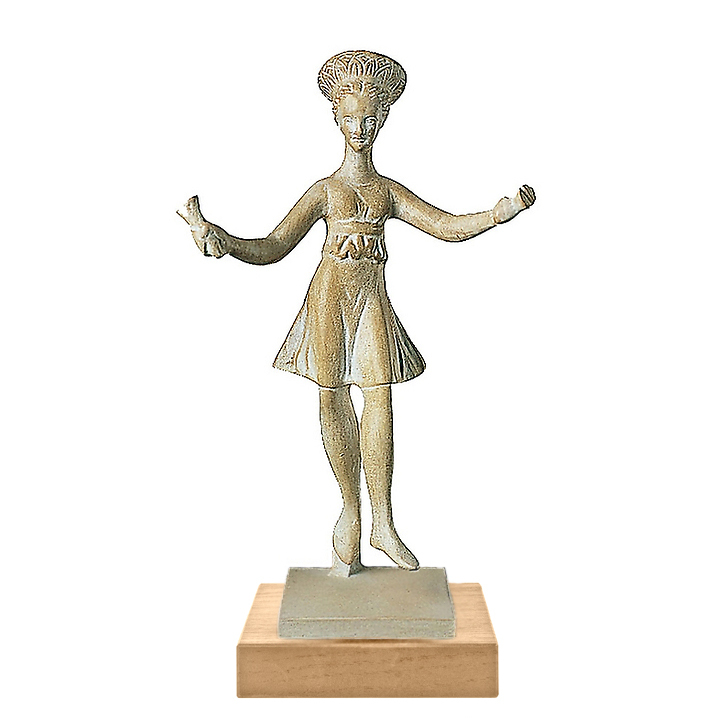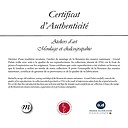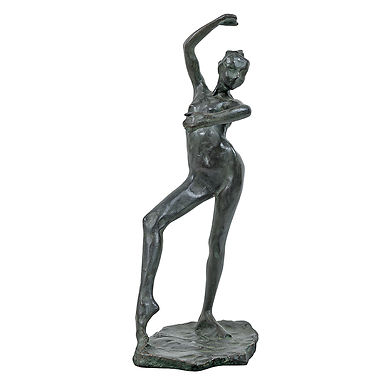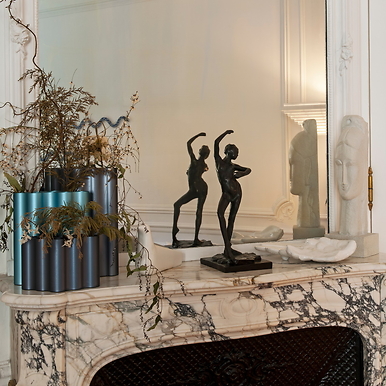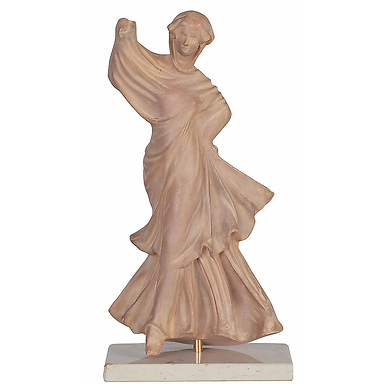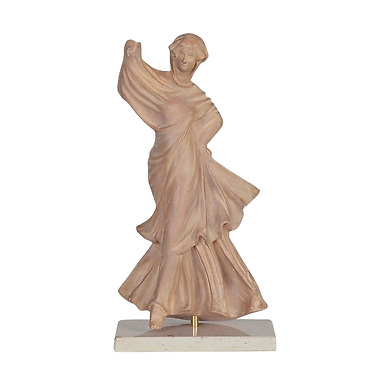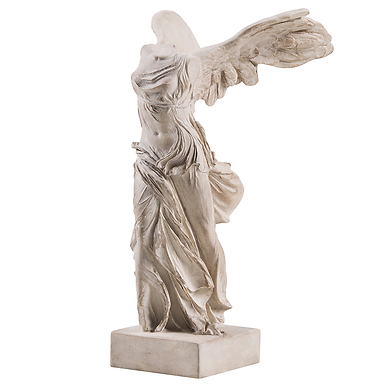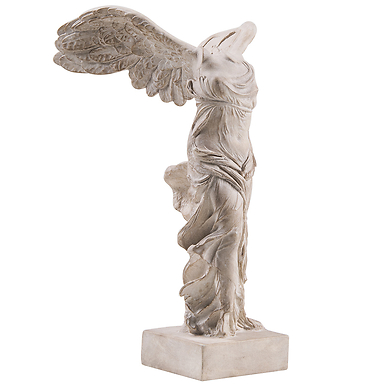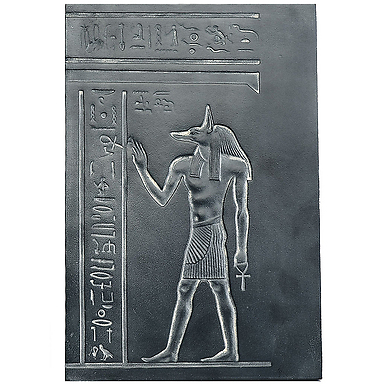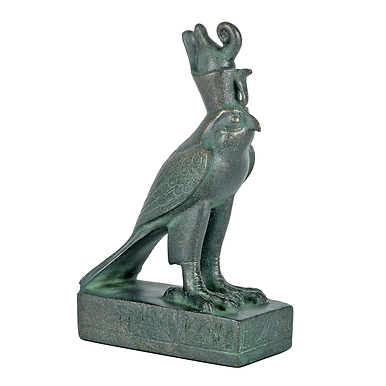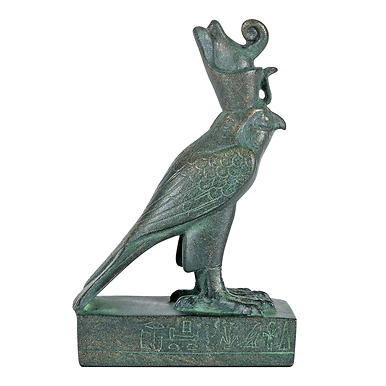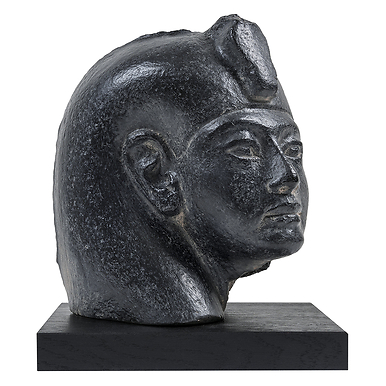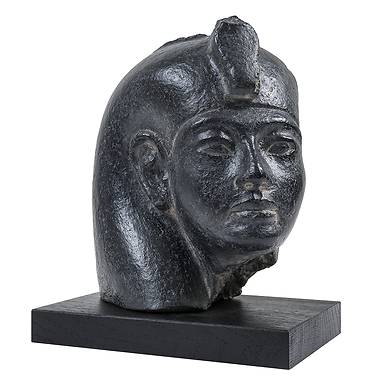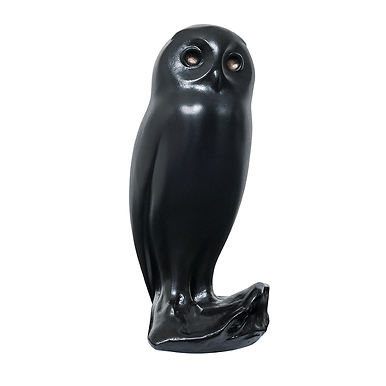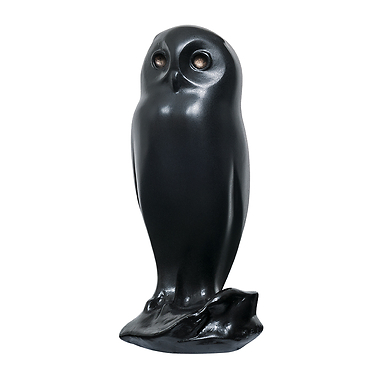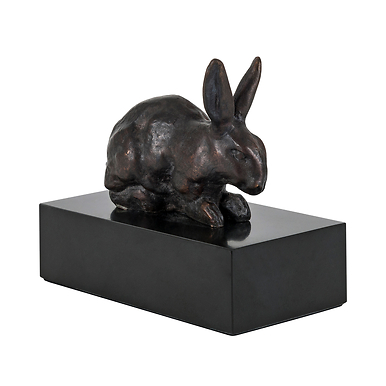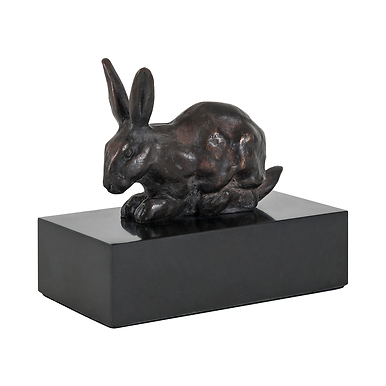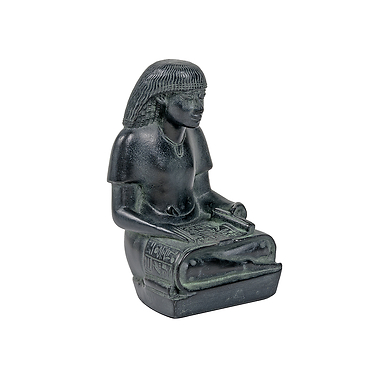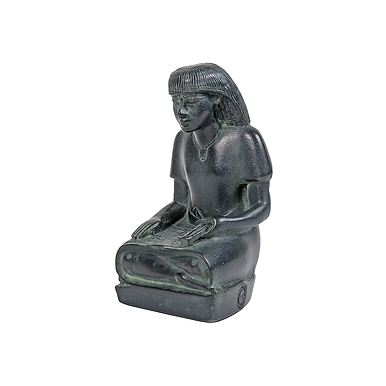Sculpture Dancer with Crotales
RB002112
Hand patinated reproduction. Mold made from a print of the original work on display at the Louvre.
The crotale, known as "krotalon" in Greek and "crotalum" in Latin, is a kind of fork-shaped castanet, with one mobile leaf fixed on a hinge that hits the other when the instrument is shaken.
Crotales...
Read more
Hand patinated reproduction. Mold made from a print of the original work on display at the Louvre.
The crotale, known as "krotalon" in Greek and "crotalum" in Latin, is a kind of fork-shaped castanet, with one mobile leaf fixed on a hinge that hits the other when the instrument is shaken.
Crotales were used in pairs, mainly during ceremonies devoted to Cybele, the goddess of nature and fertility, or to accompany dancing. This figurine hopping on one leg is shown performing a dance step.
She wears a short double-belted "chiton", which falls to above the knees (a costume worn by everyone on feast days), and she has a "calathiscos" (a vase-shaped basket) on her head.
The original of this statuette still has traces of colour. A cast could not be made of it as it is too fragile. The models on sale come from the cast of a copy made by Pierre Courbin in 1936.
Close
Login to see prices
Sold by GrandPalaisRmn

